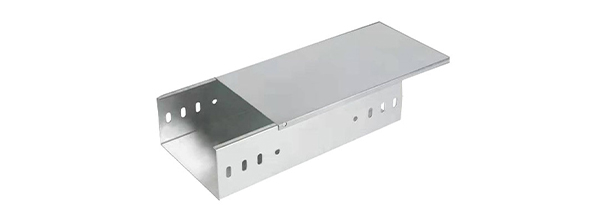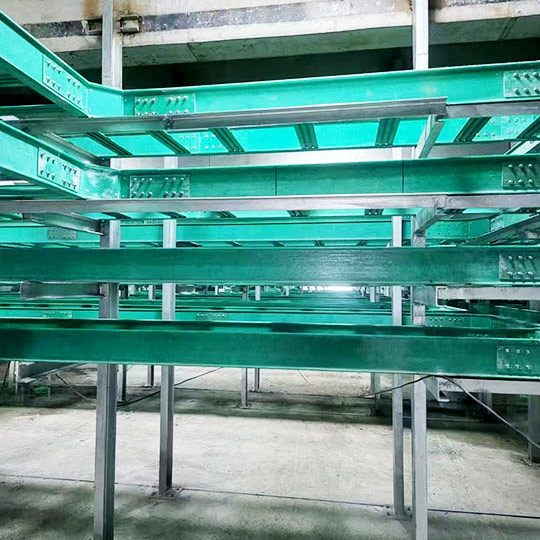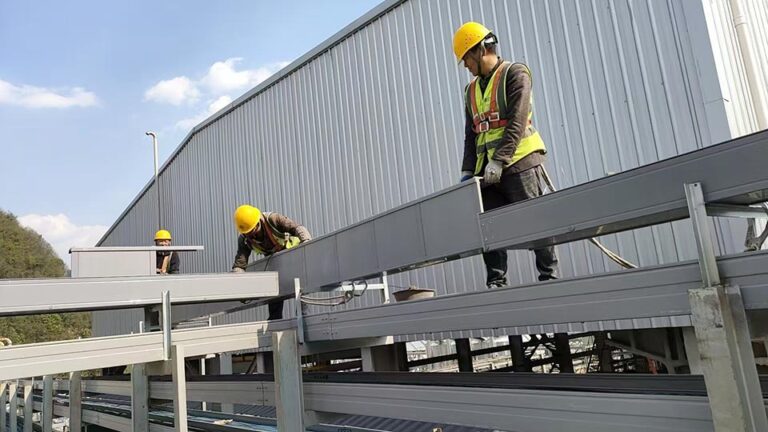Welcome to My Blog!
Before we dive into the content, I’d love for you to join me on my social media platforms where I share more insights, engage with the community, and post updates. Here’s how you can connect with me:
Facebook:https://www.facebook.com/profile.php?id=61576230391049
Now, let’s get started on our journey together. I hope you find the content here insightful, engaging, and valuable.
Table of Contents
Introduction
If you’re dealing with complex electrical or communication systems, you’re probably aware of how vital cable management is.
One of the most efficient solutions? Cable trays. These systems not only support and route cables but also improve safety, organization, and long-term maintenance.
However, choosing among the different types of cable trays can be overwhelming if you’re not familiar with their applications, advantages, and limitations.
This guide walks you through everything you need to know—from structural differences to use-case scenarios—so you can make an informed decision that suits your project needs.

What Are the Main Types of Cable Trays?
Cable trays are categorized primarily by their design and function. Each type has distinct features that make it suitable for specific industrial, commercial, or residential scenarios.
Here are the major types you should know:
Ladder-Type Cable Trays
Ladder trays feature two side rails with open rungs between them. This design allows for maximum airflow, making them ideal for high-voltage or power-heavy installations. They’re commonly used in factories, power plants, and large-scale infrastructure where heat dissipation and support strength are essential.
Advantages:
- Excellent heat ventilation
- High mechanical strength
- Easy to install and maintain
Perforated Cable Trays
Also known as ventilated trays, these feature small holes or slots along the base and side rails. They provide moderate airflow and also offer better cable protection than ladder trays. This makes them a great fit for control systems or sensitive environments.
Advantages:
- Balanced ventilation and protection
- Suitable for medium-duty installations
- Aesthetic appeal for exposed areas
Solid Bottom Cable Trays
These trays have a completely closed base that protects cables from external contaminants like dust, moisture, and even electromagnetic interference. They’re particularly useful in sensitive areas such as data centers, fiber optic systems, or areas exposed to environmental stress.
Advantages:
- Maximum cable protection
- Minimizes electromagnetic interference
- Ideal for sensitive or outdoor use
Trough Cable Trays
Trough or channel cable trays are partially enclosed systems that offer a compromise between protection and ventilation. They are designed to support moderate cable loads and are often used in commercial buildings and light industrial applications.
Advantages:
- Easy cable entry and exit
- Moderate cable protection
- Cost-effective for low-to-medium traffic areas
Wire Mesh Cable Trays
Often referred to as basket trays, these are made of welded wire mesh. Their open design makes them highly flexible and easy to modify, which is why they’re popular in data centers, retail spaces, and areas with frequent cabling changes.
Advantages:
- Lightweight and easy to install
- Excellent airflow
- Flexible routing for complex layouts
Single-Rail Cable Trays
This design uses a single central spine, with arms extending out to support the cables. They are best suited for low-load, high-density environments where space is limited.
Advantages:
- Minimal installation space required
- Ideal for narrow or vertical installations
- Simplified support structure


Types of Cable Trays Comparison Table
Here’s a quick comparison to help you understand the differences at a glance:
| Cable Tray Type | Ventilation | Protection | Load Capacity | Best Use Cases |
|---|---|---|---|---|
| Ladder | Excellent | Low | High | Power plants, factories, industrial spaces |
| Perforated | Good | Medium | Medium | Control panels, commercial buildings |
| Solid Bottom | Poor | High | Medium | Data centers, outdoor, fiber optics |
| Trough/Channel | Moderate | Medium | Medium | Offices, low-density systems |
| Wire Mesh | Excellent | Low | Low–Medium | Data centers, tech hubs, retail |
| Single-Rail | Moderate | Low | Low | Compact installations, ceiling routes |
Why Choosing the Right Type of Cable Tray Matters
The cable tray you choose directly affects installation ease, maintenance cost, system performance, and safety. For example, ladder trays are perfect for environments where heat management is a priority, while solid bottom trays shine in clean room or wet environments.
Improved ventilation prevents heat buildup, which is crucial for power cables that may otherwise overheat. Enhanced protection is vital in harsh conditions or in environments with sensitive electronic equipment. Choosing the right type ensures compliance with safety regulations and lowers the risk of fire, system failure, or costly reinstallation.
Additionally, the right tray system supports future scalability. For instance, wire mesh trays make it easy to reroute or add cables during upgrades, saving time and money.
Material Choices for Different Types of Cable Trays
Besides design, material plays a significant role in cable tray selection. Here’s how different materials perform:
| Material | Corrosion Resistance | Weight | Cost | Typical Application |
|---|---|---|---|---|
| Steel | Medium | Heavy | Affordable | Industrial use, indoor environments |
| Stainless Steel | High | Heavy | High | Chemical plants, coastal facilities |
| Aluminum | High | Light | Moderate | Power systems, outdoor installations |
| FRP (Fiberglass) | Very High | Medium | High | Highly corrosive environments |
Depending on your installation’s location and exposure, material selection will heavily influence the longevity and performance of your system.
Cable Tray Installation: Tips for Getting It Right
A poorly installed cable tray system can lead to sagging, short circuits, or unplanned downtime. Here are a few best practices:
- Ensure tray spans match cable load and support requirements
- Maintain minimum bend radii, especially for fiber optics
- Avoid sharp corners that may damage insulation
- Label trays for easy cable identification and maintenance
- Provide separate trays for power and data to avoid interference
Types of Cable Trays in Modern Industry Trends
According to industry reports, the global market for cable trays is growing steadily, projected to reach over USD 6.4 billion by 2025, with a CAGR exceeding 6%.
This growth is driven by increased construction in industrial, commercial, and infrastructure sectors.
As smart buildings, data centers, and renewable energy systems expand, so does the demand for well-organized, future-ready cable management systems.
Another emerging trend is the use of recyclable materials and modular tray systems that allow for easier upgrades. Smart cable trays with integrated monitoring for temperature or load balancing are also gaining popularity in advanced installations.
Conclusion
Whether you’re planning a new facility, upgrading an old system, or troubleshooting a cable nightmare, selecting the right type of cable tray is key to long-term reliability. From ladder trays built for power-intensive systems to wire mesh trays suited for fast-changing environments, every type has its strength.
If you’re unsure about which option fits your requirements, our expert team is here to help. We offer customized cable tray solutions for all industries—contact us today for a consultation and get the support you need to streamline your cable management system.
FAQ
Can I use different types of cable trays in the same project?
Yes. It’s common to use ladder trays for main cable runs and wire mesh trays for end-point connections or vertical routing.
What is the ideal spacing between supports for cable trays?
Solid bottom or aluminum trays with weather-resistant coatings are best for outdoor and corrosive environments.
Are there code standards for cable tray installation?
Yes. Most installations follow local electrical codes and industry standards such as IEC or NEMA specifications.
How do I manage cable separation in trays?
Use dividers or separate trays for power, data, and control cables to reduce EMI and maintain signal integrity.



